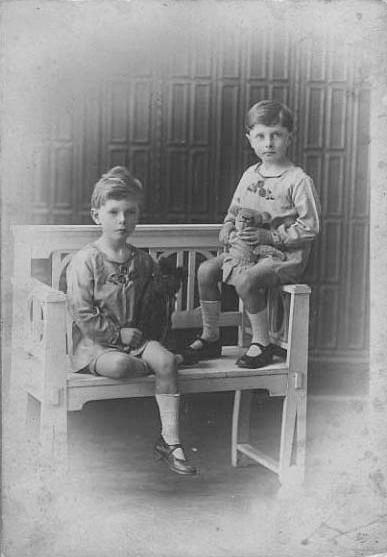
Figure 1.--Here we see unidentified English childen wearin the standard instep strap shoe. This photograph is undated, but looks like the 1910s to us. |

|
We notice two basic types of strap shoes. We see both instep and ankle strap shoes. Grald Foley on the previous page seems to be wearing ankle strap shoes. We see both types in the 19th century. The ankle strap shoes continued to be worn in the early-20th century, but begn to go out of style. We no longer see then\m to many extent after World War I in the 1920s. The standard in step strap shoes had a single bar. We note some with multiple bars. An example of a strap shoe with multiple bars were the ones worn by Ernest Barlett in 1904. Another example is an unidentified boy at about the same time. Much more common, however, were the single bar shoes. Here there were many variations such as the width of the strap and the area of open space between the strap and closed toe. We begin to see a new construction at the end of the 19th century. It is an ankle strap shoe with a center support post. We first see them as a dress shoe patent leather shoe (1890s). Iniitially this strap shoe was worn by both boys and girls, but it became seen as a girl's shoes over time. The same construction was adopted as a sandal in the late-1900s decade. The major difference being the leater material and the sole. The sandal had ordinary often brown leather and a more substantial sole. The sandal version came to be called school sandals.
One type of strap shoes was the ab\nkle strap. Grald Foley on the previous page seems to be wearing ankle strap shoes. We see both types in the 19th century. The ankle strap shoes continued to be worn in the early-20th century, but began to go out of style. We no longer see them to many extent after World War I in the 1920s. We have not found as many examples as we have found in the American photographic record, but this may be because our American archive is much larger. We have found countless American examples, but relatively few English examples.
The standard strap shoe came to be an instep strap with a single bar. We note some with multiple bars. An example of a strap shoe with multiple bars were the ones worn by Ernest Barlett in 1904. Another example is an unidentified boy at about the same time. Much more common, however, were the single bar shoes. They are the only ones we see after the early-20th century. There were many variations such as the width of the strap and the area of open space between the strap and closed toe. These shoes were worn by both boys and girls, but after World War II we see them becoming primarily a girls shoes. We see a few pre-school boys wearing them into the 1960s, but mostly boys from wealthy families. They were also worn for formal wear in special occassions like weddings. Boys did mot wear them to school. We begin to see a new construction at the end of the 19th century. It is an ankle strap shoe with a center support post. We first see them as a dress shoe patent leather shoe (1890s). Initially this strap shoe was worn by both boys and girls, but it became seen as a girl's shoes over time. The same construction was adopted as a sandal in the late-1900s decade. The major difference being the leater material and the sole. The sandal had ordinary often brown leather and a more substantial sole. The boys did wear this style to school as a sandal. In gact it became a standard school garment. The sandal version came to be called school sandals.
Navigate the Boys' Historical Clothing Strap Shoe-related Pages:
[Return to the Main strap shoe page]
[White knee socks]
[Sand shoes]
[Pinafores]
[Smocks]
[Kilts]
[Ringlet curls]
[Fauntleroy suits]
[Buster Brown suits]
[Ring bearers]
Navigate the Boys' Historical Clothing Web Site:
[Return to the Main English strap shoe page]
[Return to the Strap shoe country page]
[Introduction]
[Activities]
[Bibliographies]
[Biographies]
[Chronology]
[Clothing styles]
[Countries]
[Contributions]
[Essays]
[FAQs]
[Glossaries]
[Images]
[Links]
[Registration]
[Tools]
[Boys' Clothing Home]
